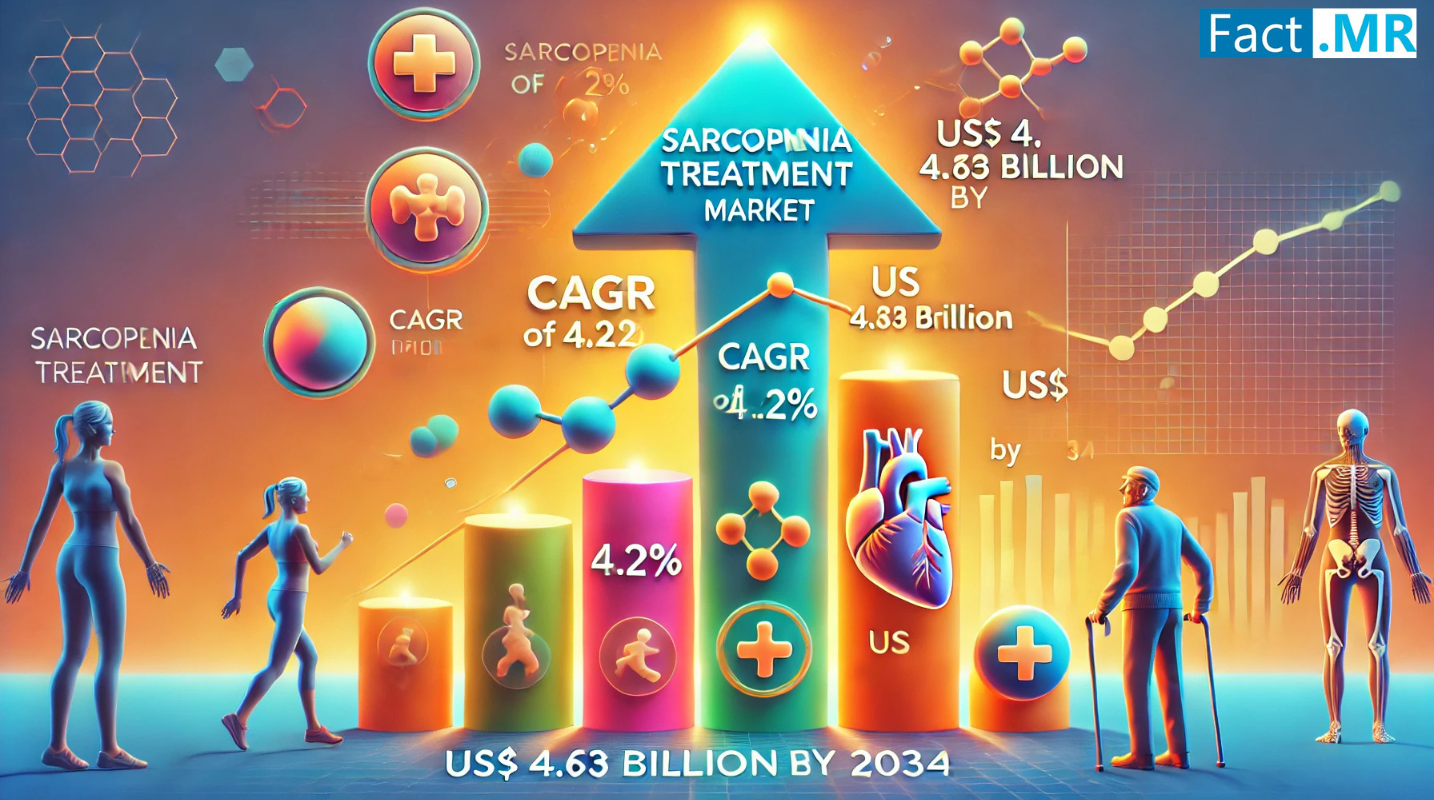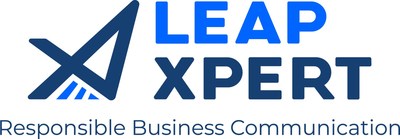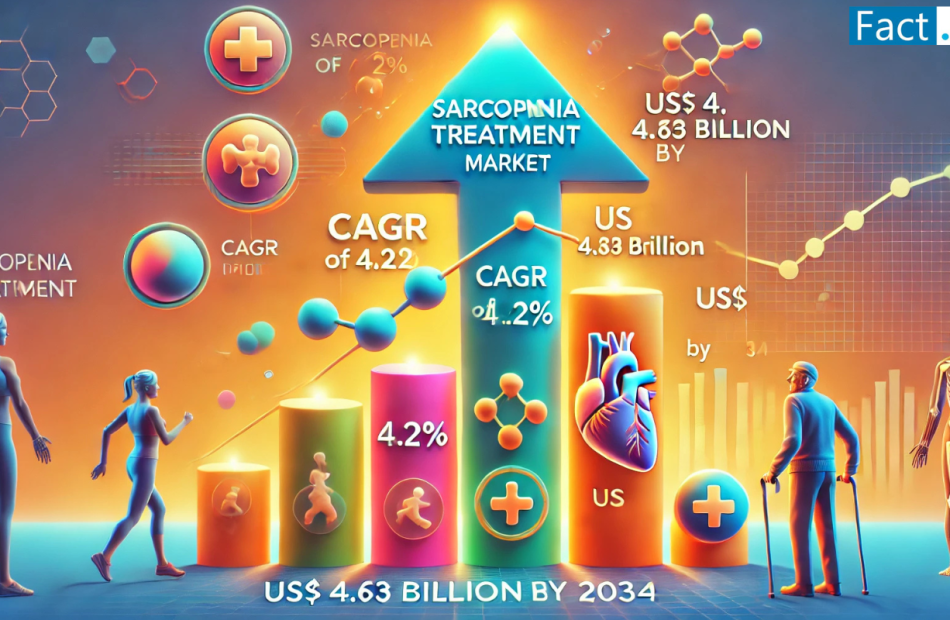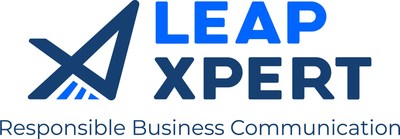EXCLUSIVE: Surviving Chavez's Venezuela To CBD Crash – CEO Reveals How To Profit In A Market Stuck On Repeat
Ever feel like the CBD market is on autopilot, stuck in a cycle of repetitive products and shrinking profit margins? For cannabis investors, this stuck-on-repeat dynamic has meant intense price pressure and dwindling returns.
Jaunty‘s CEO Nicolas Guarino knows a thing or two about survival. Before navigating the brutal CBD crash that slashed prices by 99%, he and his family weathered the economic and political upheaval of Chávez-era Venezuela. Now, in an industry dominated by dull uniformity, Guarino has led Jaunty to profitability by leaning into solventless products and creating an accessible, unpretentious brand.
Guarino’s journey offers a fresh perspective and a profitable path forward for investors seeking stability in the face of volatility, proving that resilience is an asset that translates across borders and markets.
- Get Benzinga’s exclusive analysis and the top news about the cannabis industry and markets daily in your inbox for free. Subscribe to our newsletter here. You can’t afford to miss out if you’re serious about the business.
Adiós Chavez!
Guarino’s roots are firmly planted in agriculture. He grew up working with water buffalo on family farms in southeastern Venezuela’s grassy savannah. Moving to New York for college, he brought with him the ethos of hard work and family ties. This background profoundly shaped his journey into the cannabis industry.
“Our family has always been about getting our hands dirty,” Guarino told Benzinga Cannabis in an exclusive interview. “The values I learned back on the farm have been foundational in building Jaunty. It’s about understanding the land, the crop, and the entire process, which, in turn, influences our approach to quality cannabis production.”

CBD Market Carash And Escape From Commoditization
Entering the CBD space in 2017, Guarino and his team launched Jaunty as a producer and supplier of high-quality CBD oil for manufacturers across the U.S. However as the market became saturated, they quickly encountered the harsh realities of price compression. By 2020, Jaunty saw the price of CBD oil drop to a meager $65 per kilo – a 99% decline from its peak, putting intense pressure on their wholesale business model.
“The CBD space became a game of scale,” Guarino explained. “The Farm Bill’s structure supports large-scale production but doesn’t leave much room for smaller, quality-focused brands. We were nearly bankrupt, but we couldn’t quit. We saw an opening when New York moved towards recreational legalization.”
New York’s decision to prioritize licenses for existing CBD operators was a lifeline. Guarino realized that to thrive in the THC market, Jaunty needed a brand that could stand apart, rather than relying on wholesale production alone. “It was clear we had to create a brand that would resonate on quality and effect,” he said.
Building Jaunty: It’s The Brand, Not Just The Product
When THC legalization got underway in New York, Guarino initially entertained deals with established brands like Old Pal, almost venturing into co-branding and white labeling. But he soon realized that these arrangements would pull Jaunty back into the commodity cycle he had just escaped.
“White labeling is for big facilities, with massive automation,” he said. “We don’t have that; we have exceptional extraction skills honed over years in CBD. So, we decided to focus on creating our brand rather than becoming just another supplier.”

This strategic decision led to the creation of Jaunty’s product lines, starting with vapes and expanding to solventless Live Rosin Gummies. By prioritizing brand identity, Jaunty has been able to maintain a competitive edge in a market where differentiation is essential.
The Fam Behind The Brand
Jaunty’s operations are more than just a business for Guarino, they are a family effort. He brought in his cousin from Venezuela who is a seasoned logistics expert, to run Jaunty’s distribution. His cousin’s experience managing 75 poultry trucks across Venezuela in challenging conditions was invaluable.
“With him overseeing our logistics, we are the only company in New York that guarantees delivery within 48 hours,” Guarino said. “It’s truly a blessing to have someone so experienced managing a crucial part of the business.” This expertise has allowed Jaunty to achieve an impressively low 4.3% distribution cost relative to sales, enhancing profitability without sacrificing service quality.
A Few Cost-Effective Strategies
The decision to invest in butane extraction for specific products reflects Jaunty’s calculated approach to innovation. “The full investment for our butane machine setup was around $500,000,” Guarino explained. “But with the right brand presence and strong distribution, we project a return on investment in four to five months.”
Jaunty now places a strong emphasis on solventless products, reflecting an industry-wide shift towards purer, more natural cannabis experiences. According to Guarino, solventless extraction is a cost-effective method with high market appeal, particularly since it requires less investment compared to butane-based extraction.

“It’s a lower capex approach that lets us offer high-quality products without the heavy initial investment,” he said. In addition, by focusing on outdoor-grown cannabis, Jaunty has been able to keep costs low while achieving quality results comparable to indoor-grown products.
A Consumer-Centric Identity
Jaunty aims to create an accessible brand for cannabis users interested in oil-based products, especially those curious about moving from flower or nicotine vaping to cannabis oils.
Unlike many extract-focused brands, which can feel exclusive or elitist, Jaunty’s approach is deliberately welcoming. “Too many brands make consumers feel they aren’t in the know. Jaunty is here to open up cannabis, not gatekeep it,” Guarino said.
This inclusive identity is especially appealing to nicotine vapers exploring cannabis, with Jaunty offering an approachable entry point.
‘The Dab Crowd’
“Most extract-focused brands have a vibe like, ‘If you know, you know.’ If you’re not part of the dab crowd, you’re not cool enough,” he added, highlighting how Jaunty takes the opposite approach by making cannabis feel approachable and not intimidating.
To help new users feel informed, Jaunty prioritizes consumer education, explaining oil types, effects, and product benefits in their packaging and interactions. “We take every opportunity to educate—about oil types, effects, and why you might choose one product over another,” Guarino explained.
As they continue to grow, Jaunty is actively learning about its consumer base, even incorporating QR code surveys on packaging to gather direct feedback.

Read Next: $8B Market On The Brink: Texas Senator Calls It ‘Uncontrollable,’ Proposes Erasing Hemp
© 2024 Benzinga.com. Benzinga does not provide investment advice. All rights reserved.
Invitation to media – Minister Soraya Martinez Ferrada to announce new initiative for the construction of multi-unit residential housing in Quebec
MAGOG, QC, Nov. 7, 2024 /CNW/ – Canada Economic Development for Quebec Regions (CED)
The Honourable Soraya Martinez Ferrada, Minister of Tourism and Minister responsible for CED, will announce the launch of the Regional Homebuilding Innovation Initiative for multi-unit homes in Quebec. This initiative is an important component of Canada’s Housing Plan, aimed at imagining the housing solutions of tomorrow today.
For the occasion, media representatives are invited to visit UsiHome, a producer of manufactured wood structures, along with Minister Martinez Ferrada.
Date:
November 8, 2024
Time of the visit:
9:30 a.m.
Location:
UsiHome
1455 Boul. Industriel
Magog, Quebec
J1X 4P2
We ask any journalists who wish to participate in this press conference followed by a tour to confirm their presence by writing to the following email address by 4 p.m. on November 7, 2024: conferences@dec-ced.gc.ca. CED will use the email addresses received to send out the news release the day of the announcement.
Stay connected
Follow CED on social media
Consult CED’s news
SOURCE Canada Economic Development for Quebec Regions

![]() View original content: http://www.newswire.ca/en/releases/archive/November2024/07/c6628.html
View original content: http://www.newswire.ca/en/releases/archive/November2024/07/c6628.html
Market News and Data brought to you by Benzinga APIs
© 2024 Benzinga.com. Benzinga does not provide investment advice. All rights reserved.
Jeffrey T Diehl Takes Money Off The Table, Sells $5.32M In Paylocity Holding Stock
Revealing a significant insider sell on November 6, Jeffrey T Diehl, Board Member at Paylocity Holding PCTY, as per the latest SEC filing.
What Happened: After conducting a thorough analysis, Diehl sold 27,818 shares of Paylocity Holding. This information was disclosed in a Form 4 filing with the U.S. Securities and Exchange Commission on Wednesday. The total transaction value is $5,324,068.
The latest update on Thursday morning shows Paylocity Holding shares down by 0.0%, trading at $213.79.
Discovering Paylocity Holding: A Closer Look
Paylocity is a provider of payroll and human capital management solutions servicing small- to midsize clients in the United States. The company was founded in 1997 and targets businesses with 10-5,000 employees and services about 39,000 clients as of fiscal 2024. Alongside core payroll services, Paylocity offers HCM solutions such as time and attendance and recruiting software as well as workplace collaboration and communication tools.
Understanding the Numbers: Paylocity Holding’s Finances
Negative Revenue Trend: Examining Paylocity Holding’s financials over 3 months reveals challenges. As of 30 September, 2024, the company experienced a decline of approximately -12.5% in revenue growth, reflecting a decrease in top-line earnings. When compared to others in the Industrials sector, the company faces challenges, achieving a growth rate lower than the average among peers.
Insights into Profitability:
-
Gross Margin: The company excels with a remarkable gross margin of 68.05%, indicating superior cost efficiency and profitability compared to its industry peers.
-
Earnings per Share (EPS): Paylocity Holding’s EPS lags behind the industry average, indicating concerns and potential challenges with a current EPS of 0.62.
Debt Management: Paylocity Holding’s debt-to-equity ratio is below industry norms, indicating a sound financial structure with a ratio of 0.34.
In-Depth Valuation Examination:
-
Price to Earnings (P/E) Ratio: Paylocity Holding’s stock is currently priced at a premium level, as reflected in the higher-than-average P/E ratio of 63.63.
-
Price to Sales (P/S) Ratio: The current P/S ratio of 9.0 is above industry norms, reflecting an elevated valuation for Paylocity Holding’s stock and potential overvaluation based on sales performance.
-
EV/EBITDA Analysis (Enterprise Value to its Earnings Before Interest, Taxes, Depreciation & Amortization): Paylocity Holding’s EV/EBITDA ratio of 36.22 exceeds industry averages, indicating a premium valuation in the market
Market Capitalization Analysis: Positioned below industry benchmarks, the company’s market capitalization faces constraints in size. This could be influenced by factors such as growth expectations or operational capacity.
Now trade stocks online commission free with Charles Schwab, a trusted and complete investment firm.
Exploring the Significance of Insider Trading
It’s important to note that insider transactions alone should not dictate investment decisions, but they can provide valuable insights.
In legal terms, an “insider” refers to any officer, director, or beneficial owner of more than ten percent of a company’s equity securities registered under Section 12 of the Securities Exchange Act of 1934. This can include executives in the c-suite and large hedge funds. These insiders are required to let the public know of their transactions via a Form 4 filing, which must be filed within two business days of the transaction.
When a company insider makes a new purchase, that is an indication that they expect the stock to rise.
Insider sells, on the other hand, can be made for a variety of reasons, and may not necessarily mean that the seller thinks the stock will go down.
Breaking Down the Significance of Transaction Codes
In the domain of transactions, investors frequently turn their focus to those taking place in the open market, as meticulously outlined in Table I of the Form 4 filing. A P in Box 3 indicates a purchase, while S signifies a sale. Transaction code C signals the conversion of an option, and transaction code A denotes a grant, award, or other acquisition of securities from the company.
Check Out The Full List Of Paylocity Holding’s Insider Trades.
Insider Buying Alert: Profit from C-Suite Moves
Benzinga Edge reveals every insider trade in real-time. Don’t miss the next big stock move driven by insider confidence. Unlock this ultimate sentiment indicator now. Click here for access.
This article was generated by Benzinga’s automated content engine and reviewed by an editor.
Market News and Data brought to you by Benzinga APIs
© 2024 Benzinga.com. Benzinga does not provide investment advice. All rights reserved.
Insider Transaction: Thomas St. Dennis Sells $121K Worth Of FormFactor Shares
On November 6, a recent SEC filing unveiled that Thomas St. Dennis, Director at FormFactor FORM made an insider sell.
What Happened: Dennis’s decision to sell 3,100 shares of FormFactor was revealed in a Form 4 filing with the U.S. Securities and Exchange Commission on Wednesday. The total value of the sale is $121,233.
As of Thursday morning, FormFactor shares are up by 1.01%, currently priced at $42.02.
All You Need to Know About FormFactor
FormFactor Inc designs, develops, manufactures, sells, and supports semiconductor probe card products. The company operates in two reportable segments namely Probe Cards Segment and the Systems Segment. Sales of probe cards and analytical probes are included in the Probe Cards Segment, while sales of probe stations and thermal sub-systems are included in the Systems Segment. Probe cards generate the maximum revenue from its operations. It offers multiple product lines which include analytical probes, probe stations, thermal sub-systems, and related services.
Financial Milestones: FormFactor’s Journey
Revenue Growth: FormFactor’s remarkable performance in 3 months is evident. As of 30 September, 2024, the company achieved an impressive revenue growth rate of 21.18%. This signifies a substantial increase in the company’s top-line earnings. As compared to competitors, the company surpassed expectations with a growth rate higher than the average among peers in the Information Technology sector.
Profitability Metrics:
-
Gross Margin: The company shows a low gross margin of 40.74%, indicating concerns regarding cost management and overall profitability relative to its industry counterparts.
-
Earnings per Share (EPS): FormFactor’s EPS is below the industry average. The company faced challenges with a current EPS of 0.24. This suggests a potential decline in earnings.
Debt Management: With a below-average debt-to-equity ratio of 0.04, FormFactor adopts a prudent financial strategy, indicating a balanced approach to debt management.
Assessing Valuation Metrics:
-
Price to Earnings (P/E) Ratio: FormFactor’s P/E ratio of 24.05 is below the industry average, suggesting the stock may be undervalued.
-
Price to Sales (P/S) Ratio: The Price to Sales ratio is 4.41, which is lower than the industry average. This suggests a possible undervaluation based on sales performance.
-
EV/EBITDA Analysis (Enterprise Value to its Earnings Before Interest, Taxes, Depreciation & Amortization): Indicated by a lower-than-industry-average EV/EBITDA ratio of 18.51, the company suggests a potential undervaluation, which might be advantageous for value-focused investors.
Market Capitalization Analysis: The company’s market capitalization is below the industry average, suggesting that it is relatively smaller compared to peers. This could be due to various factors, including perceived growth potential or operational scale.
Now trade stocks online commission free with Charles Schwab, a trusted and complete investment firm.
Why Insider Transactions Are Key in Investment Decisions
Investors should view insider transactions as part of a multifaceted analysis and not rely solely on them for decision-making.
From a legal standpoint, the term “insider” pertains to any officer, director, or beneficial owner holding more than ten percent of a company’s equity securities as outlined in Section 12 of the Securities Exchange Act of 1934. This encompasses executives in the c-suite and significant hedge funds. These insiders are mandated to inform the public of their transactions through a Form 4 filing, to be submitted within two business days of the transaction.
A company insider’s new purchase is a indicator of their positive anticipation for a rise in the stock.
While insider sells may not necessarily reflect a bearish view and can be motivated by various factors.
Essential Transaction Codes Unveiled
Investors prefer focusing on transactions that take place in the open market, indicated in Table I of the Form 4 filing. A P in Box 3 indicates a purchase, while S indicates a sale. Transaction code C indicates the conversion of an option, and transaction code A indicates grant, award or other acquisition of securities from the company.
Check Out The Full List Of FormFactor’s Insider Trades.
Insider Buying Alert: Profit from C-Suite Moves
Benzinga Edge reveals every insider trade in real-time. Don’t miss the next big stock move driven by insider confidence. Unlock this ultimate sentiment indicator now. Click here for access.
This article was generated by Benzinga’s automated content engine and reviewed by an editor.
Market News and Data brought to you by Benzinga APIs
© 2024 Benzinga.com. Benzinga does not provide investment advice. All rights reserved.
SVP At Knowles Sells $370K Of Stock
Robert J Perna, SVP at Knowles KN, reported an insider sell on November 6, according to a new SEC filing.
What Happened: Perna’s decision to sell 21,080 shares of Knowles was revealed in a Form 4 filing with the U.S. Securities and Exchange Commission on Wednesday. The total value of the sale is $370,164.
During Thursday’s morning session, Knowles shares down by 0.0%, currently priced at $19.35.
Discovering Knowles: A Closer Look
Knowles Corp is engaged in the manufacturing of micro-acoustic microphones and balanced armature speakers, audio solutions, high-performance capacitors, and radio frequency filtering products. It operates in three segments; the Precision Devices segment specializes in the design and delivery of high-performance capacitor products and RF solutions, Medtech & Specialty Audio segment designs and manufactures microphones and balanced armature speakers used in applications and the Consumer MEMS Microphones segment designs and manufactures micro-electro-mechanical systems microphones and audio solutions used in applications. The majority of its revenue comes from the Consumer MEMS Microphones segment.
A Deep Dive into Knowles’s Financials
Revenue Growth: Knowles’s revenue growth over a period of 3 months has been noteworthy. As of 30 September, 2024, the company achieved a revenue growth rate of approximately 31.82%. This indicates a substantial increase in the company’s top-line earnings. As compared to competitors, the company surpassed expectations with a growth rate higher than the average among peers in the Information Technology sector.
Exploring Profitability:
-
Gross Margin: With a high gross margin of 44.14%, the company demonstrates effective cost control and strong profitability relative to its peers.
-
Earnings per Share (EPS): Knowles’s EPS reflects a decline, falling below the industry average with a current EPS of 0.01.
Debt Management: Knowles’s debt-to-equity ratio is below the industry average at 0.3, reflecting a lower dependency on debt financing and a more conservative financial approach.
Exploring Valuation Metrics Landscape:
-
Price to Earnings (P/E) Ratio: With a lower-than-average P/E ratio of 37.94, the stock indicates an attractive valuation, potentially presenting a buying opportunity.
-
Price to Sales (P/S) Ratio: With a lower-than-average P/S ratio of 2.18, the stock presents an attractive valuation, potentially signaling a buying opportunity for investors interested in sales performance.
-
EV/EBITDA Analysis (Enterprise Value to its Earnings Before Interest, Taxes, Depreciation & Amortization): At 17.06, Knowles’s EV/EBITDA ratio reflects a below-par valuation compared to industry averages signalling undervaluation
Market Capitalization Analysis: The company’s market capitalization is below the industry average, suggesting that it is relatively smaller compared to peers. This could be due to various factors, including perceived growth potential or operational scale.
Now trade stocks online commission free with Charles Schwab, a trusted and complete investment firm.
Unmasking the Significance of Insider Transactions
Considering insider transactions is valuable, but it’s crucial to evaluate them in conjunction with other investment factors.
Within the legal framework, an “insider” is defined as any officer, director, or beneficial owner holding more than ten percent of a company’s equity securities as per Section 12 of the Securities Exchange Act of 1934. This includes executives in the c-suite and major hedge funds. These insiders are mandated to disclose their transactions through a Form 4 filing, to be submitted within two business days of the transaction.
The initiation of a new purchase by a company insider serves as a strong indication that they expect the stock to rise.
However, insider sells may not always signal a bearish view and can be influenced by various factors.
Navigating the World of Insider Transaction Codes
When analyzing transactions, investors tend to focus on those in the open market, detailed in Table I of the Form 4 filing. A P in Box 3 denotes a purchase,while S signifies a sale. Transaction code C signals the conversion of an option, and transaction code A denotes a grant, award, or other acquisition of securities from the company.
Check Out The Full List Of Knowles’s Insider Trades.
Insider Buying Alert: Profit from C-Suite Moves
Benzinga Edge reveals every insider trade in real-time. Don’t miss the next big stock move driven by insider confidence. Unlock this ultimate sentiment indicator now. Click here for access.
This article was generated by Benzinga’s automated content engine and reviewed by an editor.
Market News and Data brought to you by Benzinga APIs
© 2024 Benzinga.com. Benzinga does not provide investment advice. All rights reserved.
The Rise of Project Portfolio Management Market: A $13.7 billion Industry Dominated by Oracle, Smartsheet, Microsoft | MarketsandMarkets™
Delray Beach, FL, Nov. 07, 2024 (GLOBE NEWSWIRE) — The Project Portfolio Management Market is expected to grow from USD 7.8 billion by 2024 to USD 13.7 billion by 2029 at a Compound Annual Growth Rate (CAGR) of 11.9% during the forecast period, according to a new report by MarketsandMarkets™.
Browse in-depth TOC on “Project Portfolio Management Market”
348 – Tables
63 – Figures
340 – Pages
Download Report Brochure @ https://www.marketsandmarkets.com/pdfdownloadNew.asp?id=225932595
Project Portfolio Management Market Dynamics:
Drivers
- Surging demand for advanced PPM tools due to growing project complexities
- Need for enhanced return on investment (ROI)
- Increasing demand for holistic view of resource management and project operations
Restraints
- High implementation costs
- Resistance to change within organizations
- Data security and privacy concerns
Opportunities
List of Top Project Portfolio Management Companies
- Oracle (US)
- Smartsheet (US)
- Microsoft (US)
- Asana (US)
- ServiceNow (US)
- Planview (US)
- SAP (Germany)
- Atlassian (Australia)
- Wrike (US)
- Monday.com (Israel)
Request Sample Pages: https://www.marketsandmarkets.com/requestsampleNew.asp?id=225932595
The expansion of the project portfolio management (PPM) industry will be fueled by the rising demand for projects to align strategically, AI and automation developments, the surge in remote work and digital collaboration tools, and the increasing use of PPM solutions in various sectors like IT, construction, finance, and healthcare to enhance resource distribution and guarantee project success.
As per offering, the solutions segment holds the largest share during the forecast period.
PPM solutions are software tools that help organizations efficiently manage projects and portfolios. Such solutions provide the functionality for project planning, resource allocation, budget management, risk assessment, and performance tracking. This allows organizations to prioritize projects at the highest level based on their vision, aligning with strategic objectives and optimizing available resources. The PPM solution gives dashboards and analytics to real-time project status and portfolio performance and supporting decisions. They are the drivers of process improvement, teamwork, and projects completed on time and within budget. All industries use these tools, available either as a product for onsite use or as cloud-based deployment models.
As per business function, the IT & software development will grow at the highest CAGR during the forecast period.
PPM is crucial in the IT & software development industry as it helps manage project organization, prioritize tasks, and align resources with business goals for efficiency. PPM solutions assist in overseeing the entire process of software projects, from initial planning and development to testing and deployment. They allow teams to monitor advancement, handle finances, and reduce risks, which helps ensure on-time completion and quality control. PPM solutions help balance workloads, enhance collaboration, and help make better decisions by offering insight into project status and resource utilization. This leads to improved performance, greater customer alignment, and successful IT strategy implementation within the company.
Inquire Before Buying: https://www.marketsandmarkets.com/Enquiry_Before_BuyingNew.asp?id=225932595
As per organization size, large enterprises hold the largest share during the forecast period.
Large companies with an employee strength of over 1,000 employees make up a substantial portion of the PPM market. These companies need advanced PPM solutions to manage large project portfolios, varied teams, and intricate workflows. Sophisticated PPM tools allow large corporations to connect with current systems, handle numerous projects simultaneously, and guarantee compatibility with strategic objectives. They utilize advanced analytics, real-time reporting, and resource optimization to improve decision-making and operational efficiency. These businesses frequently seek customized, tailor-made, and flexible options to assist with international activities. Robust PPM systems aid large enterprises in simplifying processes, reducing risks, and promoting innovation within their extensive project environments.
Get access to the latest updates on Project Portfolio Management Companies and Project Portfolio Management Industry

About MarketsandMarkets™ MarketsandMarkets™ has been recognized as one of America's best management consulting firms by Forbes, as per their recent report. MarketsandMarkets™ is a blue ocean alternative in growth consulting and program management, leveraging a man-machine offering to drive supernormal growth for progressive organizations in the B2B space. We have the widest lens on emerging technologies, making us proficient in co-creating supernormal growth for clients. Earlier this year, we made a formal transformation into one of America's best management consulting firms as per a survey conducted by Forbes. The B2B economy is witnessing the emergence of $25 trillion of new revenue streams that are substituting existing revenue streams in this decade alone. We work with clients on growth programs, helping them monetize this $25 trillion opportunity through our service lines - TAM Expansion, Go-to-Market (GTM) Strategy to Execution, Market Share Gain, Account Enablement, and Thought Leadership Marketing. Built on the 'GIVE Growth' principle, we work with several Forbes Global 2000 B2B companies - helping them stay relevant in a disruptive ecosystem. Our insights and strategies are molded by our industry experts, cutting-edge AI-powered Market Intelligence Cloud, and years of research. The KnowledgeStore™ (our Market Intelligence Cloud) integrates our research, facilitates an analysis of interconnections through a set of applications, helping clients look at the entire ecosystem and understand the revenue shifts happening in their industry. To find out more, visit www.MarketsandMarkets™.com or follow us on Twitter, LinkedIn and Facebook. Contact: Mr. Rohan Salgarkar MarketsandMarkets Inc. 1615 South Congress Ave. Suite 103, Delray Beach, FL 33445 USA : 1-888-600-6441 UK +44-800-368-9399 Email: sales@marketsandmarkets.com Visit Our Website: https://www.marketsandmarkets.com/
© 2024 Benzinga.com. Benzinga does not provide investment advice. All rights reserved.
Sarcopenia Treatment Market to Experience 4.2% CAGR, Reaching US$ 4.63 Billion by 2034 | Fact.MR Report
Rockville, MD, Nov. 07, 2024 (GLOBE NEWSWIRE) — The world population has crossed 8 billion, with a significant number of elderly people suffering from sarcopenia. As per a new study by Fact.MR, the global sarcopenia treatment market is estimated at US$ 3.07 billion in 2024 and is projected to expand at a CAGR of 4.2% from 2024 to 2034.
The market is progressing as younger individuals increasingly recognize the signs of such conditions and pursue treatment. Treatment options include dietary and exercise therapies, often recommended by rheumatologists based on age and immune system. All of these factors are driving market growth as patients increasingly rely on these therapies.
Myostatin, vitamin D, angiotensin, and omega-3 supplements are favored by consumers for their ability to enhance strength recovery with minimal side effects, thus increasing demand for treatments. Rising personal healthcare expenses are projected to drive demand for sarcopenia treatment supplements.
- According to the National Health Expenditure Accounts (NHEA), healthcare spending in the United States grew by 4.3% in 2016, reaching US$ 3.3 trillion, or US$ 10,348 per person.
For More Insights into the Market, Request a Sample of this Report: https://www.factmr.com/connectus/sample?flag=S&rep_id=10051

Key Takeaways from Market Study
- The global sarcopenia market is projected to reach US$ 4.63 billion by the end of 2034.
- The North American market is forecasted to expand at a 6% CAGR through 2034.
- In 2024, protein supplements are estimated to account for 5% of the market share.
- By 2034, Latin America is projected to hold 7% of the global market share.
- The market in Brazil is forecasted to expand at a CAGR of 1% from 2024 and 2034.
“Increasing prevalence of sarcopenia is necessitating early diagnosis and effective treatments. The susceptibility of the expanding aging population to sarcopenia is also driving market expansion,” says a Fact.MR analyst.
Leading Players Driving Innovation in the Sarcopenia Treatment Market:
Key industry participants like Bayer AG, Haleon Group of Companies, Zydus Life Sciences Limited, Eli Lilly and Company, Novartis AG, Abbott Laboratories Inc., GlaxoSmithKline Plc, F-Hoffmann La-Rache, Sanofi Inc., Amway Corporation. etc. are driving the sarcopenia treatment industry.
Association of Sarcopenia with Chronic Conditions
Sarcopenia is often associated with chronic conditions like diabetes, cancer, and cardiovascular disease. The rising occurrence of sarcopenia due to the increasing prevalence of these ailments boosts the demand for treatments. This surge in cases has driven consumers to seek treatment, thereby driving market growth.
Sarcopenia is now being diagnosed earlier as awareness of the condition grows among both the public and healthcare professionals. As awareness increases, there is a greater demand for improved treatments and therapies. These factors have spurred manufacturers in the country to expand their operations to seize market opportunities.
Sarcopenia Treatment Industry News:
- In October 2023, Metagenics LLC acquired 100% of Amipro Advanced Development Products, which had been the exclusive distributor of Metagenics’ products in South Africa for many years. This acquisition strengthens Metagenics’ distribution network, enabling direct distribution operations across key EMEA markets.
- Additionally, in September 2023, Biophytis received authorization from the United States Food and Drug Administration (FDA) to initiate its SARA-31 research in the U.S., marking the first phase 3 trial in the sarcopenia therapy sector.
Get Customization on this Report for Specific Research Solutions:
https://www.factmr.com/connectus/sample?flag=S&rep_id=10051
More Valuable Insights on Offer
Fact.MR, in its new offering, presents an unbiased analysis of the sarcopenia treatment market for 2018 to 2023 and forecast statistics for 2024 to 2034.
The study divulges essential insights into the market based on product type (protein supplements, vitamin B12 supplements, vitamin D & calcium supplements) and distribution channel (hospital pharmacies, retail pharmacies, online pharmacies, hypermarkets & supermarkets), across six major regions of the world (North America, Latin America, Europe, East Asia, South Asia & Oceania, and MEA).
Check out More Related Studies Published by Fact.MR Research:
Muscle stimulators market is expected to reach US$ 1.85 billion by 2032, growing at a CAGR of 5.4%.
Patient blood management market in 2022 is valued at US$ 12.7 billion and is estimated to reach a sales revenue of US$ 18.4 billion by the end of 2027.
Women’s health rehabilitation products market is predicted to increase from its current valuation of US$ 3.22 billion and reach US$ 5.77 billion by the end of 2033.
Bone biopsy systems market is set to enjoy a valuation of US$ 227.6 million in 2022 and expand at a CAGR of 6% to reach US$ 408.9 million by the end of 2032.
Veterinary endoscopy market is currently valued at US$ 184 million. Global sales of veterinary endoscopy machines are expected to rise at a CAGR of 5.5% from 2022 to 2027 and will reach US$ 240.4 million by 2027.
About Us:
Fact.MR is a distinguished market research company renowned for its comprehensive market reports and invaluable business insights. As a prominent player in business intelligence, we deliver deep analysis, uncovering market trends, growth paths, and competitive landscapes. Renowned for its commitment to accuracy and reliability, we empower businesses with crucial data and strategic recommendations, facilitating informed decision-making and enhancing market positioning. With its unwavering dedication to providing reliable market intelligence, FACT.MR continues to assist companies in navigating dynamic market challenges with confidence and achieving long-term success. With a global presence and a team of experienced analysts, FACT.MR ensures its clients receive actionable insights to capitalize on emerging opportunities and stay ahead in the competitive landscape.
Contact:
US Sales Office:
11140 Rockville Pike
Suite 400
Rockville, MD 20852
United States
Tel: +1 (628) 251-1583
Sales Team : sales@factmr.com
Follow Us: LinkedIn | Twitter | Blog

© 2024 Benzinga.com. Benzinga does not provide investment advice. All rights reserved.
MEI: Increased government intervention during the Quiet Revolution was not responsible for rising living standards in Quebec
MONTREAL, Nov. 07, 2024 (GLOBE NEWSWIRE) — The expansion of the Quebec government during the Quiet Revolution had no significant impact on the living standards of Quebecers, shows a new MEI publication based on economic modelling.
“The idea that the growth of the government allowed Quebecers to get richer in the 1960s has a particularly strong hold on our collective psyche,” says Vincent Geloso, senior economist at the MEI and co-author of the study. “However, by putting it to the test, we find that while the Quebec population did indeed get richer during this period, it wasn’t due to the expansion of government.”
Between 1960 and 1975, the wealth gap between Quebec and Ontario shrank by between 6.8 and 9.7 percentage points.
In order to test the effects of the growth of the Quebec government during this period, the researchers used a method known as “synthetic controls,” grouping together a mix of different indicators for five Canadian provinces.
The indicators selected were real GDP per worker, real GDP per capita, size-adjusted household income, real hourly wages, life expectancy at birth, school enrollment rate, average years of total schooling, and size of government.
The researchers tested the validity of this control by comparing the performance of this synthetic Quebec to that actually observed in Quebec, for a period of 15 years before the Quiet Revolution. The variations of the different components of the model corresponded to those observed in Quebec during the same period.
“Basically, what this method allows us to do is observe how Quebec would have evolved without the Quiet Revolution, and compare it to what actually happened in order to isolate causes,” explains Mr. Geloso.
By observing the difference between the performance of the synthetic model and the performance actually observed in Quebec between 1960 and 1975, the researchers were able to measure the effects that were attributable to the Quiet Revolution.
The results show that the expansion of government in this period did not have a statistically significant effect on real GDP per capita, household income, or hourly wages for Quebecers.
The only measurable positive effects were a 40-day increase in life expectancy and an increase of 0.91 years of schooling. This latter effect was entirely attributable to a modification of the Education Act, extending by a year the minimum age for leaving school in the early 1960s.
The most notable impact is the increase in the size of the government, which by 1975 was taking up 4.7 percentage points more space in the Quebec economy than it otherwise would have.
“Other than the increase in the size of the government, it does not seem that the Quiet Revolution had very large effects on the well-being of Quebecers,” notes Mr. Geloso. “While Quebec really did catch up economically, this was more likely due to the creativity and ingenuity of Quebecers than to government intervention.”
The MEI study is available here: https://www.iedm.org/wp-content/uploads/2024/11/lepoint132024_en.pdf
The MEI is an independent public policy think tank with offices in Montreal, Calgary, and Ottawa. Through its publications, media appearances, and advisory services to policymakers, the MEI stimulates public policy debate and reforms based on sound economics and entrepreneurship.
Interview requests
Natalia Alcocer
Intern, Communications
Cell: 514-974-7835
nalcocer@iedm.org
—
To follow the MEI’s work, subscribe to our Twitter account @iedm_montreal.

Market News and Data brought to you by Benzinga APIs
© 2024 Benzinga.com. Benzinga does not provide investment advice. All rights reserved.
Automotive Telematics Market Value, Growth Analysis By 2024 to 2030 – Exactitude Consultancy
Luton, Bedfordshire, United Kingdom, Nov. 07, 2024 (GLOBE NEWSWIRE) — The growth of the automotive telematics market is driven by rising vehicle production with advanced safety features, such as eCall, across regions including Europe, Japan, China, and the United States. The adoption rate of embedded telematics is expected to increase, supporting market expansion for telematics solutions over the forecast period.
A key factor in the rising adoption of telematics systems is the focus of automotive manufacturers on embedding telematics in both passenger and commercial vehicles. Growing consumer awareness of telematics’ benefits, including better insights into vehicle performance and driver behavior, is prompting fleet owners and managers to adopt these systems. Increased consumer interest and higher technology adoption rates, both from OEMs and aftermarket providers, are further fueling the market’s growth.
Access PDF Sample Report (Including Graphs, Charts & Figures) @
https://exactitudeconsultancy.com/reports/21281/automotive-telematics-market/#request-a-sample
Growing Demand for Connected Vehicle Solutions Drives Market Growth
The automotive industry is witnessing a surge in demand for connected vehicle solutions as consumers show increasing interest in advanced connectivity features. Automotive manufacturers are responding by integrating telematics systems across a wide range of vehicles to engage customers and showcase the extensive benefits of vehicle telematics.
IoT Integration Enhances Vehicle Performance and Safety
Vehicle manufacturers are embracing Internet of Things (IoT) technologies to boost vehicle performance and safety features. This integration of IoT solutions into telematics is enhancing real-time data collection, analysis, and application, contributing to the increased reliability and functionality of modern vehicles.
Telematics Solutions Empower Fleet Management with Advanced Analytics
Fleet management systems are increasingly relying on telematics solutions to improve operational control through data analytics. With features like optimized driving routes, driver behaviour insights, and performance tracking, telematics-enabled fleet management empowers fleet operators to make data-driven decisions, enhancing overall efficiency and safety.
Market Dynamics
DRIVER: Rising Adoption of Connected Car Services
The connected car market is experiencing rapid growth, driven largely by advancements in the telecom industry. The implementation of 5G networks across major regions has spurred demand for connected car services by enabling features like real-time traffic monitoring, remote diagnostics, and autonomous driving capabilities. Collaborations between telecom providers and automotive manufacturers have further accelerated the adoption of connected features. For example, in June 2023, Targa Telematics partnered with Renault to incorporate the “Renault Easy Connect for Fleet” platform, enhancing connectivity options in Renault and Dacia models.
Satellite Technology and Sustainability Goals Fuel Connected Car Advancements
Satellite technology is playing a significant role in advancing connected and autonomous vehicles, aligning with the United Nations’ 2030 Sustainable Development Goals (SDGs). Specifically, several nations are working towards SDG 3 targets aimed at reducing road traffic fatalities and injuries by 2030. The integration of satellites into connected vehicles aids in data collection and analysis, crucial for enhancing road safety and improving navigation. To meet growing consumer demands for enhanced features, automakers are embedding advanced systems in mid-segment and premium vehicles, generating a wealth of real-time data that telematics tools can interpret, which is driving market growth.
Restraint: Lack of Standardization
The telematics market within the automotive industry faces significant challenges due to the lack of standardization and inconsistent regulations across regions. Different regions have their own set of standards, making it difficult for telematics devices to work seamlessly together. For example, Original Equipment Manufacturers (OEMs) often develop proprietary telematics systems that do not integrate smoothly with third-party applications or services, limiting the ability to use external applications across different vehicles. This fragmentation results in difficulties with data sharing, integration, and the provision of consistent real-time updates, such as traffic information or vehicle diagnostics.
Cybersecurity Concerns and Data Breaches
Rising cybersecurity threats, such as unauthorized access to vehicles and data breaches, are additional concerns that could impact the widespread adoption of telematics technology. In January 2023, security researchers revealed vulnerabilities in the telematics systems of 16 car manufacturers, which allowed hackers to control car functions, including starting or stopping the engine. In March 2023, Skoda Auto India experienced a data breach, with over 20 databases and customer information leaked on a hacker forum. These incidents highlight the potential risks of telematics technology, further complicating efforts to enhance the security and trustworthiness of telematics systems.
Report Link Click Here: https://exactitudeconsultancy.com/reports/21281/automotive-telematics-market/
Opportunity: 5G/6G and Artificial Intelligence Will Create Futuristic Growth Opportunities
The advent of 5G/6G technology has opened up significant growth opportunities for the automotive telematics industry, providing enhanced speed, low latency, and high bandwidth. These advancements are particularly evident in premium and luxury vehicles, which are increasingly equipped with telematics devices operating on 5G/6G networks. As consumer demand for these feature-rich vehicles rises, the market for telematics solutions in vehicles has expanded. According to exactitude consultancy analysis, sales of premium cars grew by 10.5% from 2021 to 2023, while luxury vehicle sales surged by 35% during the same period. This growing demand for premium and luxury vehicles has created new opportunities for telematics devices that can perform a range of functions, including vehicle maintenance detection, enhanced user experiences, remote diagnostics, and in-car infotainment systems.
Safety & Security Segment Growth
The safety and security segment is poised for significant growth, driven by the increasing integration of advanced safety features like Advanced Driver Assistance Systems (ADAS), anti-lock braking systems, and others. As automakers focus on enhancing vehicle safety, the incorporation of telematics systems to support these features will be critical in boosting consumer adoption and improving road safety overall.
Artificial Intelligence in Telematics
The integration of artificial intelligence (AI) with 5G/6G infrastructure is accelerating the development of connected vehicles, where AI processes vast amounts of data from the vehicle’s surroundings to enhance operational efficiency and decision-making capabilities. Companies like Tesla have pioneered the use of AI-based features such as Autopilot, which improves safety and self-driving capabilities by leveraging data collected from millions of vehicles. AI also enables predictive maintenance in automotive telematics, allowing fleet managers to anticipate and prevent costly repairs or breakdowns before they occur. The combination of 5G/6G technology with AI is a key driver for future growth in the automotive telematics market, offering enhanced capabilities and a more connected, efficient driving experience.
Challenge: Cybersecurity
As the telematics industry continues to expand in the automotive sector, cybersecurity remains a critical challenge. With the increasing connectivity of vehicles, telematics systems such as software, apps, and Bluetooth are vulnerable to cyberattacks. Several incidents have highlighted the potential risks posed by cyber vulnerabilities in connected vehicles. For example, in 2015, two researchers were able to hack into Chrysler’s Jeep vehicle, leading to a software upgrade for 1.4 million vehicles. Similarly, Tesla S and Nissan Leaf models were targeted in a cyberattack in February 2016.
To address these risks, various stakeholders are focusing on integrating cybersecurity and threat detection systems within telematics solutions. Data analytics and artificial intelligence (AI) are being utilized to improve the security features of telematics systems. In partnership with a leading car manufacturer, Viasat developed the first-ever advanced in-car connectivity system with military-grade security features.
Regulatory Efforts to Improve Cybersecurity
Regulators worldwide are responding to the increasing cybersecurity threats by setting minimum standards for vehicle software and security. For example, the United Nations Economic Commission for Europe (UNECE) introduced two key regulations—UN Regulations R155 and R156—in June 2024 to combat cybercrimes in connected vehicles.
- UN R155 mandates that automakers install a Cybersecurity Management System (CSMS) in vehicles to identify and mitigate cyber threats throughout a vehicle’s lifecycle.
- UN R156 requires automakers to implement Software Update Management Systems (SUMS), ensuring that software updates are regularly processed to keep vehicles protected from emerging security threats.
These regulations are expected to significantly reduce cybersecurity concerns related to connected vehicles, promoting safer and more secure automotive telematics systems globally.
Automotive Telematics Market Ecosystem.
The leading Original Equipment Manufacturers (OEMs) in the automotive telematics market have embraced the latest technologies, diversified portfolios, and established strong distribution networks globally. These OEMs are at the forefront of integrating connected vehicle technologies, offering solutions that enhance vehicle safety, efficiency, and overall user experience. By leveraging advancements in 5G/6G connectivity, artificial intelligence (AI), and real-time data analytics, these companies are shaping the future of automotive telematics.
- Robert Bosch GmbH (Germany)
- Webfleet Solutions B.V. (Netherlands)
- Trimble (U.S.)
- Verizon (U.S.)
- Zonar Systems (U.S.)
- Octo Group S.p.A (Italy)
- Microlise Telematics Pvt. Ltd. (U.K.)
- Harman International (U.S.)
- AT&T (U.S.)
- TomTom N.V. (Netherlands)
- Visteon Corporation (U.S.)
- Telefonica S.A (Spain)
- Aptiv PLC (Ireland)
- Geo Tab Inc. (Canada)
- Mix Telematics (South Africa)
- Microlise Limited (UK)
- Continental AG (Germany)
- LG Electronics (South Korea)
- Harman International (US)
Recent Developments
- Continental AG and Google Cloud Collaboration (January 2024): At CES 2024, Continental AG and Google Cloud unveiled a generative AI voice assistant integrated into Continental’s Smart Cockpit High-Performance Computer. This collaboration enhances user interaction in vehicles, offering conversational navigation, driver personalization, and in-car control.
- Continental and Aurora Innovation (January 2024): Continental AG and Aurora Innovation showcased advanced hardware designs at CES 2024, featuring telematics units and automated driving control units that support Aurora’s self-driving technology.
Request Sample Copy of this Report at: https://exactitudeconsultancy.com/reports/21281/automotive-telematics-market/#request-a-sample
Embedded Systems to Lead the Automotive Telematics Market
The embedded systems segment is anticipated to hold the largest market share in the automotive telematics industry by 2030. Embedded telematics systems offer a range of advanced features and substantial benefits compared to integrated systems. These solutions seamlessly integrate with the vehicle’s onboard electronics, enabling functionalities such as real-time data insights, navigation assistance, and remote control, all without requiring additional hardware or aftermarket installations. As a result, embedded telematics provides enhanced vehicle security, improved driver safety, and optimized operational efficiency, meeting the increasing demand for connected and smart vehicle solutions.
Luxury automakers, including Mercedes-Benz and BMW, have been early adopters, offering embedded telematics as standard or optional features to enhance the driving experience with advanced connectivity and convenience. Mainstream brands like Ford and Toyota have also followed suit, incorporating embedded systems to offer valuable features such as remote vehicle access, stolen vehicle tracking, and predictive maintenance alerts. These features are particularly attractive to consumers and fleet operators looking to enhance vehicle safety and performance without the need for aftermarket installations. The growing consumer demand for connected car services, coupled with regulatory mandates and ongoing technological advancements, is driving the global adoption of embedded telematics solutions.
Asia Pacific Dominates the Automotive Telematics Market
The Asia Pacific region is poised to be the most lucrative market for automotive telematics during the forecast period. China holds the largest market share in the region, accounting for more than 45% of the global vehicle production. The automotive telematics market in Asia Pacific is expected to see substantial growth, with passenger car production in the region predicted to increase from approximately 57 million units in 2024 to about 62 million units by 2030. A significant driver behind this growth is the increasing demand for premium and luxurious vehicle features, particularly in India, which is expected to experience the fastest growth rate in the region.
Key players in the Indian automotive market, including MG Motor, Maruti Suzuki, Hyundai, and Tata Motors, are integrating telematics solutions into their vehicles to meet the rising demand for advanced vehicle technologies. Additionally, major telecom players like Vodafone Idea, Airtel, and Jio are supporting the automotive industry by providing robust connectivity services to enable advanced features in premium and luxury vehicles.
China: Leading in 5G Network Deployment
China has established the largest 5G network in the world, with over 2.64 million 5G base stations in operation by the end of March 2023. The rapid development of 5G-based telematics cars is significantly supported by the Chinese government’s investment in 5G infrastructure, creating a conducive environment for the growth of connected vehicles. The increasing demand for safer and more efficient transportation has prompted automotive manufacturers to integrate 5G technology into their vehicles.
Major OEMs such as BYD, Geely, and SAIC Motor are leading efforts to incorporate 5G-enabled telematics systems in their vehicles. For example, Huawei and SAIC Motor have partnered to develop the “HiCar” system, integrating 5G technology with intelligent vehicle systems to enhance user experience through seamless connectivity. Additionally, Geely and China Mobile collaborated to launch the world’s first 5G-based remote driving service, allowing users to control their vehicles remotely via a mobile app, marking a significant innovation in automotive telematics.
Market Segments:
By Services
- Emergency Call
- Stolen Vehicle Assistance
- Stolen Vehicle Tracking
- Stolen Vehicle Slowdown
- Remote Ignition Block
- Theft Alarm Notification
- Insurance Risk Assessment (Usage Based Insurance)
- On-Road Assistance (Breakdown Assistance)
- Remote Diagnostics
- Others
By Fleet Management Services
- Fleet Tracking and Geofencing
- Routing and Scheduling
- Vehicle Maintenance and Diagnostics
- Fleet Analytics and Reporting
- Others
By Vehicle Type
- Passenger cars
- Light Commercial Vehicles
- Trucks
- Buses
By Vehicle Type
- Passenger cars
- Light Commercial Vehicles
- Heavy Commercial Vehicles
By Form
By Connectivity
By Offerings
Electric & Hybrid Vehicle Telematics Market, By Vehicle Type
- Battery Electric Vehicles (BEVs)
- Plug-in Hybrid Vehicles (PHEVs)
- Fuel-cell Electric Vehicles (FCEVs)
Electric & Hybrid Vehicle Telematics Market, By Services
- Emergency Call
- Stolen Vehicle Assistance
- Stolen Vehicle Tracking
- Stolen Vehicle Slowdown
- Remote Ignition Block
- Theft Alarm Notification
- Insurance Risk Assessment (Usage Based Insurance)
- On-Road Assistance (Breakdown Assistance)
- Remote Diagnostics
- Others
By Region
- Asia Pacific
- Europe
- North America
- Rest of the World
Get a Sample PDF Brochure:
https://exactitudeconsultancy.com/reports/21281/automotive-telematics-market/#request-a-sample
Related Reports:
In-Wheel Motors Market
https://exactitudeconsultancy.com/reports/2832/in-wheel-motors-market/
The global in-wheel motors market is expected to grow at 20% CAGR from 2022 to 2029. It is expected to reach above USD 2,741.46 million by 2029 from USD 541 million in 2020.
Logistics Automation Market
https://exactitudeconsultancy.com/reports/2234/logistics-automation-market/
The global logistics automation market is expected to grow a 10% CAGR from 2019 to 2028. It is expected to reach above USD 103.75 billion by 2028 from USD 44 billion in 2019.
Automotive Filters Market
https://exactitudeconsultancy.com/reports/1754/automotive-filters-market/
The global automotive filter market is expected to grow at 3.95% CAGR from 2019 to 2028. It is expected to reach above USD 22.4 billion by 2028 from USD 18.00 billion in 2019.
Automotive Haptic Technology Market
https://exactitudeconsultancy.com/reports/2608/automotive-haptic-technology-market/
The global automotive haptic technology market is expected to grow at 11% CAGR from 2022 to 2029. It is expected to reach above USD 5.76 billion by 2029 from USD 2.25 billion in 2020.
Electric Ships Market
https://exactitudeconsultancy.com/reports/2197/electric-ships-market/
The global Electric Ships Market is expected to grow at more than 13% CAGR from 2019 to 2028. It is expected to reach above USD 15.11 billion by 2028 from a little above USD 3.96 billion in 2019.
Smart Containers Market
https://exactitudeconsultancy.com/reports/824/smart-containers-market/
The Global Smart Containers Market size is expected to grow at more than 17% CAGR from 2015 to 2025. It is expected to reach above USD 7.1 billion by 2025 from USD 1.6 billion in 2015.
Automotive Plastics Market
https://exactitudeconsultancy.com/reports/2103/automotive-plastics-market/
The global automotive plastics market is expected to grow at 7.9% CAGR from 2019 to 2028. It is expected to reach above USD 35.93 billion by 2028 from USD 18.12 billion in 2019.
Luxury Cars Market
https://exactitudeconsultancy.com/reports/2998/luxury-cars-market/
The global luxury car market size was USD 420.31 billion in 2020 and is projected to reach USD 812.6 billion by 2029, exhibiting a CAGR of 7.6% during the forecast period.
Transportation Telematics Market
https://exactitudeconsultancy.com/reports/3118/transportation-telematics-market/
The global transportation telematics market is expected to grow at 20% CAGR from 2022 to 2029. It is expected to reach above USD 66.04 billion by 2029 from USD 12.79 billion in 2020.
Headlamps Market
https://exactitudeconsultancy.com/reports/965/headlamps-market/
The Global Headlamps Market is expected to grow at more than 3.96% CAGR from 2018 to 2025. It is expected to reach above USD 229 million by 2025 from a little above USD 176 million in 2018.
Water Bikes Market
https://exactitudeconsultancy.com/reports/4496/water-bikes-market/
The global Water Bikes Market is expected to grow at 12% CAGR from 2022 to 2029. It is expected to reach above USD 46.59 billion by 2029 from USD 16.8 billion in 2020.
Autonomous Ships Market
https://exactitudeconsultancy.com/reports/2143/autonomous-ships-market/
The global autonomous ships market is expected to grow at 7% CAGR from 2019 to 2028. It is expected to reach above USD 9.97 billion by 2028 from USD 5.42 billion in 2019.
h 15.688
w 1782
15.688
1782
10.667

Irfan Tamboli (Head of Sales) Phone: + 1704 266 3234 sales@exactitudeconsultancy.com https://bulletin.exactitudeconsultancy.com/
© 2024 Benzinga.com. Benzinga does not provide investment advice. All rights reserved.
IPC and LeapXpert Partner for Federated Messaging Governance and Compliance
NEW YORK and LONDON, Nov. 7, 2024 /PRNewswire/ — IPC, the leading provider of secure, compliant communications and multi-cloud connectivity solutions for financial markets, has partnered with LeapXpert, the responsible business communication pioneer, to provide enhanced messaging communications capture, governance and compliance capabilities to regulated financial businesses.

In an increasingly digital workplace with growing use of messaging channels alongside traditional telephony communication, LeapXpert solutions address the key financial industry challenge of managing effective surveillance and associated regulatory compliance obligations such as data recordkeeping. Specifically, LeapXpert focuses on creating a federated messaging environment for frictionless, cross-platform messaging between multiple users and apps. A centralized, highly interoperable communication platform, accessed through a Single Professional Identity (one contact number) streamlines messaging functionality, providing an enhanced communication experience, robust communications governance and compliance with recordkeeping requirements from the SEC, CFTC, ESMA, FCA and other regulators.
IPC has been at the forefront of technology innovation in trading communications systems for more than 50 years. Its market-leading communications technologies, product innovation and strategic partnerships with specialist service providers like LeapXpert reflects a focus and commitment to improving the trading experience for all stakeholders. LeapXpert solutions can be integrated within IPC’s Unigy, Trader Voice, Unified Comms & Mobile capture solutions, creating a unique and highly differentiated industry solution.
James Tonks, SVP Partner Development, IPC, commented: “This collaboration represents the future of compliant communication. The use of messaging channels is accelerating. Telephone networks are already federated; federated messaging is the next major leap in the digital enterprise communication revolution. We are excited to be able to harness the proven technology of an experienced service provider to offer a robust, frictionless and enterprise-grade messaging solution with associated governance best practice and regulatory compliance.”
Avi Pardo, Co-founder & CBO of LeapXpert, said: “In the fast-paced world of financial markets, seamless communication is essential. Our partnership with IPC ensures that financial institutions can effortlessly navigate the complexities of off-channel communication, staying compliant while optimizing their operations. We are excited to bring our expertise in communications to IPC’s extensive client base, providing a comprehensive Digital Communications Governance & Archiving (DCGA) solution.”
The LeapXpert Communications Platform supports different chat features, such as one-on-one and group chats across various messaging channels, including WhatsApp, iMessage, WeChat, SMS, Telegram, Signal, and LINE. Clients stay on their preferred (or authorized) channels, while traders and employees use one platform and number across multiple channels making them much more readily accessible to clients.
API integration and client/employee identification and validation functionality ensures that both parties know they are speaking to a particular individual rather than a member of a team. Advanced governance with sophisticated data leakage prevention, information barriers, anti-virus and malware services means firms can more easily monitor client conversations, safeguard sensitive information and protect assets from loss and security threats and prevent data leaks.
About IPC
A specialist technology and service leader powering global financial markets for over 50 years, IPC Systems is at the forefront of electronic trading connectivity and state-of-the-art cloud communications, setting the standard for exceptional service, innovation, and expertise.
IPC’s customer-first approach is bolstered by an extensive and diverse financial ecosystem that spans all asset classes and connects market participants anywhere in the world for enhanced communication, collaboration, and compliance. Global services include electronic trading, trading communications, and infrastructure-as-a-service solutions. IPC is ideally positioned to anticipate change and remain aligned with rapidly transforming markets, and to empower customers to adapt to change, now and in the future. To learn more, visit www.ipc.com, explore our insights page, and follow us on LinkedIn.
About LeapXpert
LeapXpert, the responsible business communication pioneer, provides enterprises peace of mind through compliant and secure communication solutions. The LeapXpert Communications Platform enables compliant, governed, and secure communication between enterprise employees and their clients across consumer messaging, while leveraging Communication Intelligence to enhance front-office employee productivity and decision-making. LeapXpert, a Gartner Cool Vendor, is headquartered in New York, with offices in London, Tel Aviv, and Asia. Hundreds of enterprise customers, with hundreds of thousands of users in more than 45 countries, depend on LeapXpert daily for Digital Communications Governance & Archiving (DCGA) solutions. For more information, visit leapxpert.com
Logo: https://stockburger.news/wp-content/uploads/2024/11/LeapXpert_Logo.jpg
![]() View original content:https://www.prnewswire.com/news-releases/ipc-and-leapxpert-partner-for-federated-messaging-governance-and-compliance-302298512.html
View original content:https://www.prnewswire.com/news-releases/ipc-and-leapxpert-partner-for-federated-messaging-governance-and-compliance-302298512.html
SOURCE LeapXpert; IPC
© 2024 Benzinga.com. Benzinga does not provide investment advice. All rights reserved.







